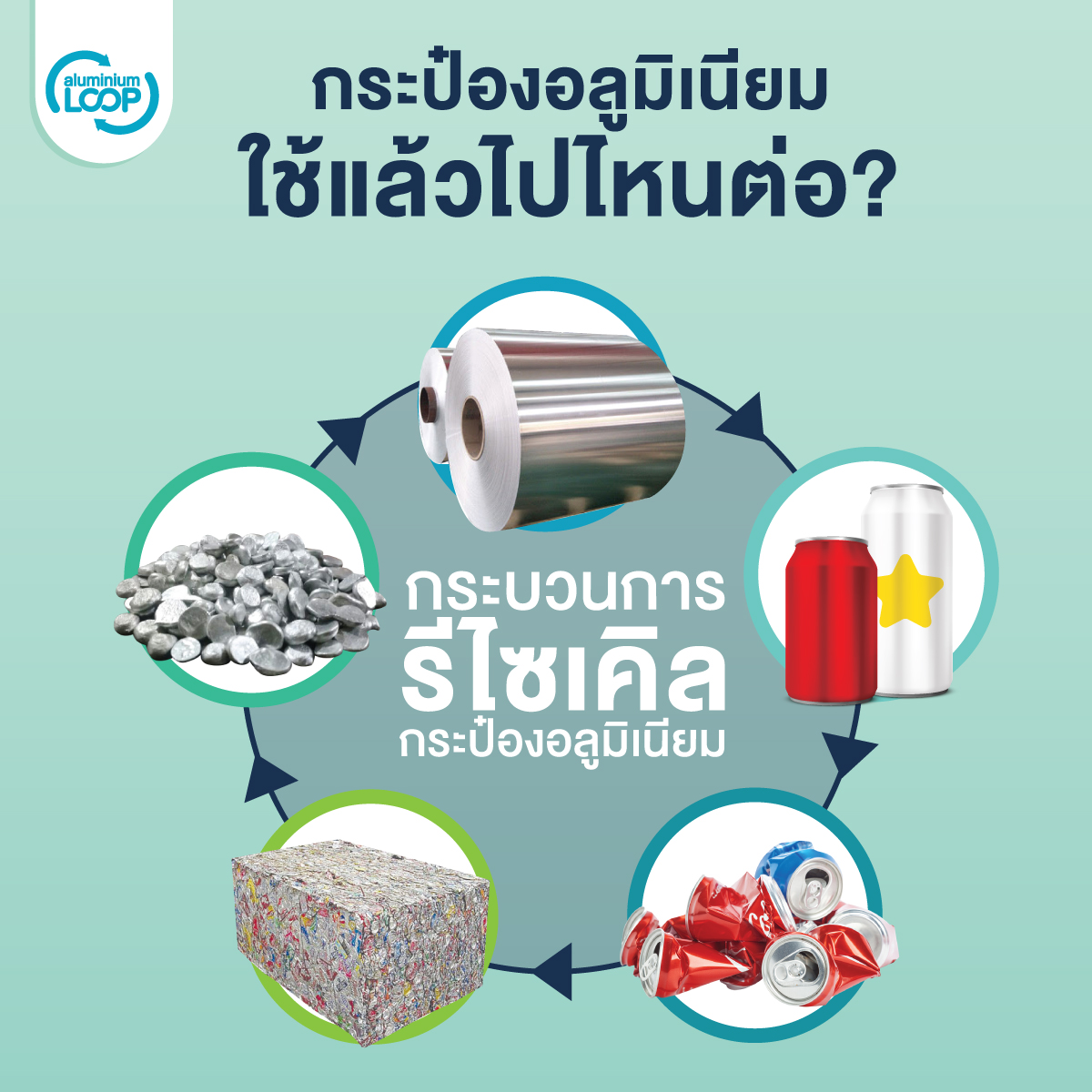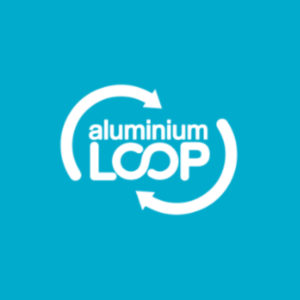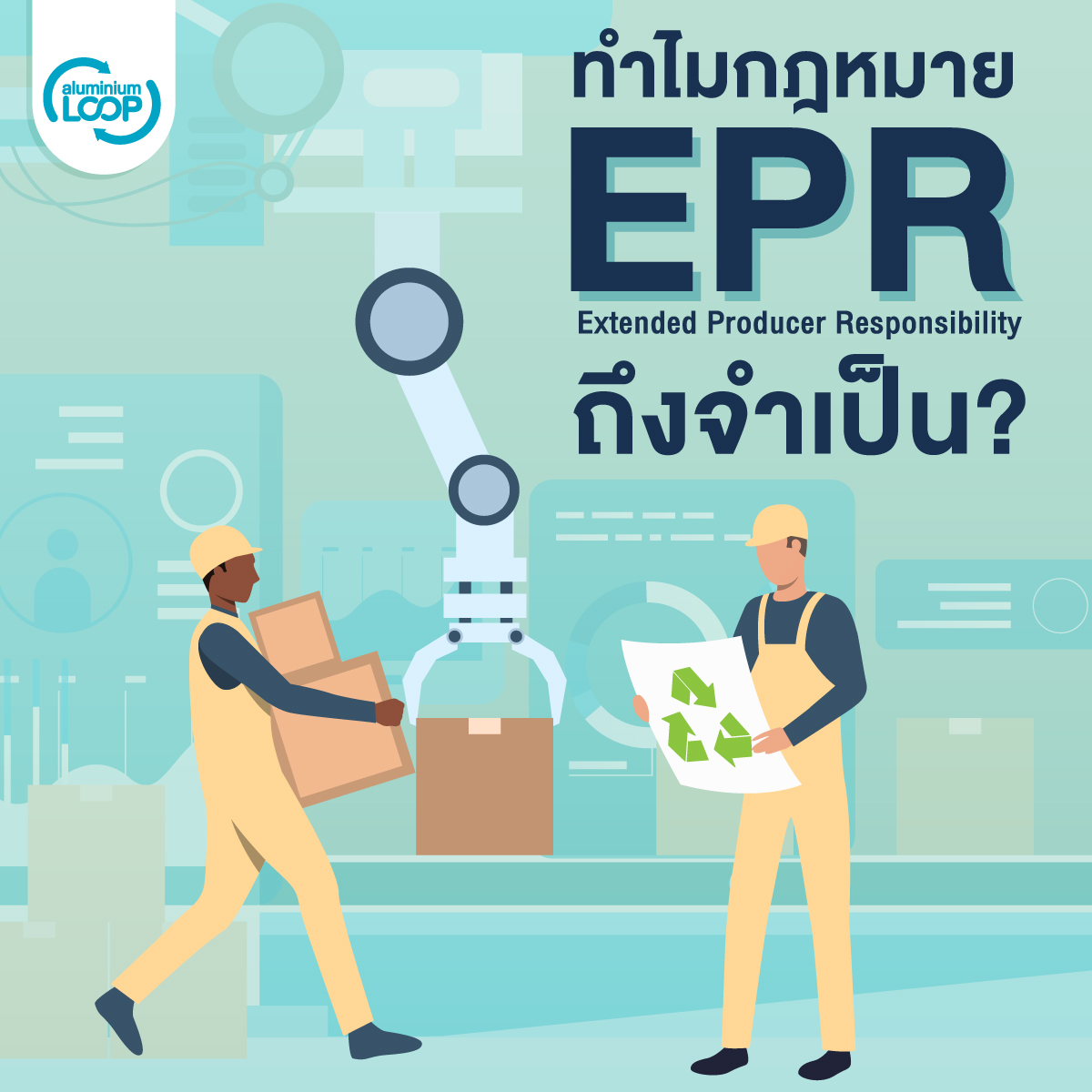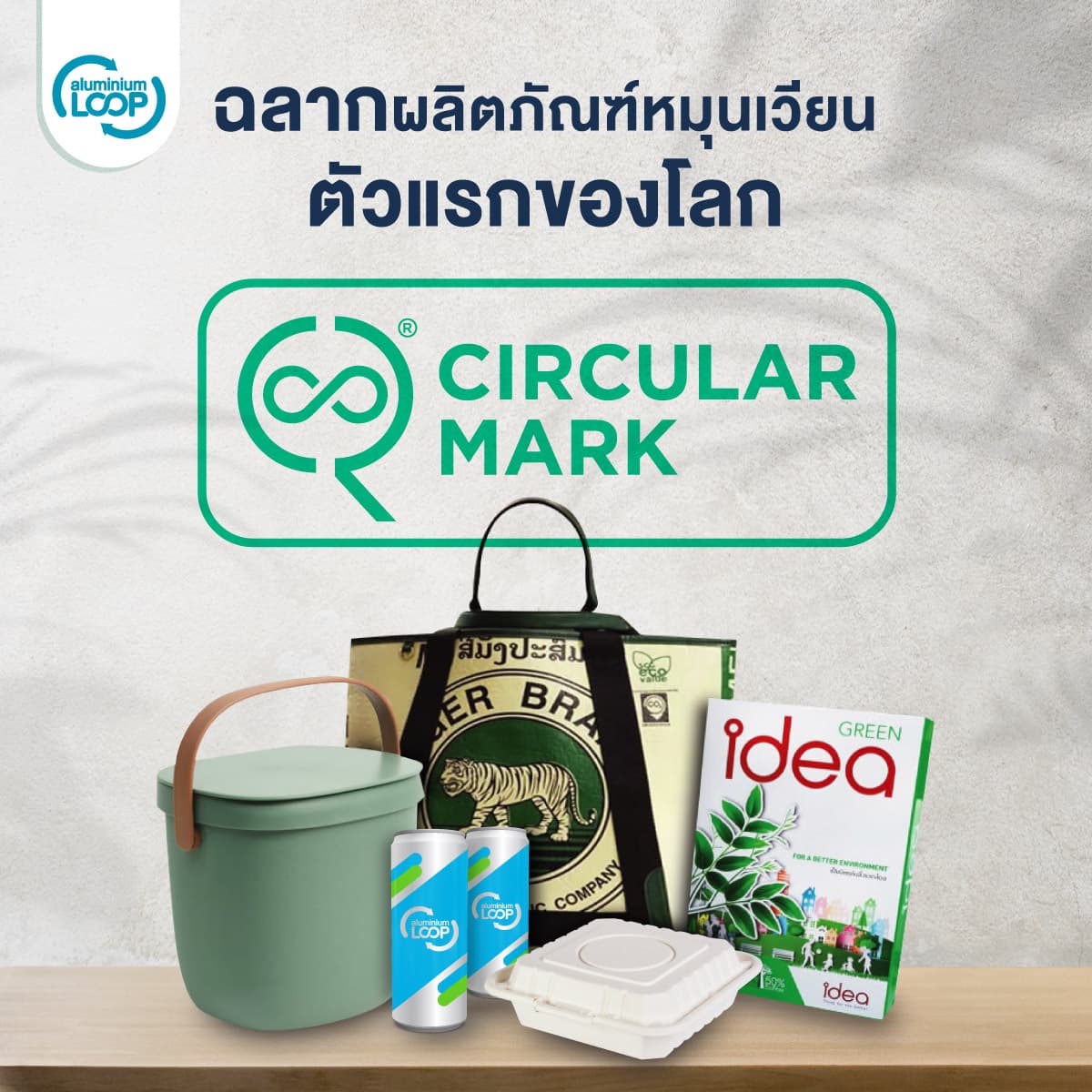
Where Do Used Aluminium Cans End Up?
Ever wondered where used aluminium cans go next? Most people tossed them in the trash without knowing they can be recycled into new cans for us to use again.
Many people are familiar with the term “Recycle,” often seen on various types of recycling bins, or on products that are described as made from recycled materials. You see and hear “Recycle” every day, but do you really understand the recycling process?
Moreover, besides Recycling, there are also “Upcycle” and “Downcycle,” which are related to managing used materials and waste.
How do these 3 processes differ? Aluminium Loop invites everyone to understand these concepts to properly manage and value used materials and packaging.

Recycle is the process of taking used materials through a process to return them to their original raw form for reuse, where the quality of the material remains the same.
Not all materials can be recycled 100%, and only a few types of materials can do so, including aluminium, glass, and other metals.
Recycling materials, for a simple example, is like taking used aluminium cans, melting them down, forming them into logs, rolling them into sheets, and then manufacturing them into new cans. The quality of the material remains the same.
Furthermore, the recyclability of some materials depends on their quality. For example, recycling paper allows it to be used again, but the fiber quality decreases with each cycle. However, the reduced quality doesn’t go to waste; it can still be recycled into lower-quality paper like cardboard or packing paper.
Recycling is about reducing the use of new resources by continually reusing the existing resources.
Not all materials need to be used once and turned into waste or just recycled. Many can be enhanced in value through development into new, quality products, or what is called “Upcycle.”
Upcycle comes from the concept of green design or eco-design, which maximizes the use of natural resources. It’s not about creating new items from new materials but extending the life of materials that have already been used so they don’t end up in the landfill prematurely.
It creates new products with different purposes from the original but still retains the original materials that are designed to be used efficiently.
The difficulty of upcycling varies depending on the material and the desired end product, with the key being environmentally friendly.
Simple upcycling examples include using old cans as plant pots with added decoration or turning clothes into bags with extra sewing work. The process of upcycling materials into new products often requires creativity and expertise, such as creating model replicas from aluminium cans or making watches from bicycle parts.
However, when upcycled products reach the end of their life, most can still be recycled, like upcycled aluminium materials, which are 100% recyclable. After recycling, these raw materials can be turned into various valuable products continuously.
Another term not everyone may be familiar with is Downcycle, a way of managing items no longer in use that, although it doesn’t add value, it does extend their life to prevent them from becoming waste too soon.
Downcycle might seem similar to Upcycle in that it creates something new from the material of an existing product. However, the difference lies in the fact that the quality of the new product is reduced, and it continues to decrease with each downcycling process until the material can no longer be used and ends up as waste.
A clear example of Downcycle is “plastic,” which we often believe to be recyclable. While it can be recycled, it’s to a very limited extent. Moreover, recycling plastic requires a lot of energy and causes pollution. Therefore, plastic is often downcycled into new products like bags and shoes made from plastic bottles, where the quality is less than the original material, but it’s more viable than recycling.
From the example of bags and shoes made from plastic bottles, many might think that this is adding value to the material because they’re pricier than the plastic bottles used as packaging. That could be considered Upcycle. But ultimately, this plastic material can only be made into new products a few times before it’s no longer usable, which definitely makes it Downcycle.
Defining the cycle of waste or used materials depends on the perspective of the newly made product. If we look at it from a value standpoint, it might be Upcycling, but if we consider the quality of the material, it might be Downcycling.
However, even if products from Downcycling eventually end up as waste, this still counts as a way to reduce waste and extend the life of materials as long as possible.
Waste and used item management doesn’t have a prescribed method, and the terminology for the cycle of materials isn’t set in stone. It depends more on the perspective and purpose of the raw materials and their use.
So, before we choose any product, we should consider whether the material can be “Recycled,” or if it can be “Upcycled” or “Downcycled.” And if the material is capable of “Closed Loop Recycling,” where resources are endlessly cycled through recycling, that becomes an even more interesting option.
Ultimately, the important thing is to think before using, help reduce waste, value the raw materials, and be mindful of our limited resources. We should focus on making the most of our resources through environmentally friendly processes, including emphasizing the importance of Closed Loop Recycling.
After reading this article, Aluminium Loop wants to invite everyone to consider every piece of waste before disposing of it: have you used it to its fullest potential, and how can you continue to add value to it?


Ever wondered where used aluminium cans go next? Most people tossed them in the trash without knowing they can be recycled into new cans for us to use again.

How does the concept of EPR help expand the Circular Economy further? How do producers adjust? Let’s learn together.

Another factor that modern consumers look for is a mark indicating that a product or its packaging is environmentally friendly.